Icy embrace of the North. Soviet submariners is dedicated
And, on the Day of the Navy, when all the sailors swell with importance and become kind and condescending towards land rats (and by that time I had more than recommended myself, but I treated it with humor, which was appreciated by swimming and walking) several interested persons allowed aboard the submarine "Chita". It was an event that made an indelible impression on me. I have a good fantasy too, so when I imagined myself in this ship, when there was a hundred meters of water above you ... For some reason, I wanted not just up, but even to land. But, giving myself an appropriate instruction, I honorably withstood the entire excursion, conscientiously listening to the foreman-guide and hitting my head against a variety of hrenoviny and mechanisms.
Forgive me, submariners, I never had the courage to ask what should be in the brain, so that voluntarily go aboard this incarnation of the claustrophob nightmare and not only live on it, but also work. You can not live there, it is my well-established opinion. I'm not claustrophobic, I myself got used to working in a limited space by that time, but it was a bust. It’s one thing when there are three of us in a kung can, and quite a different thing is a submarine.
The foreman, who drove us through the compartments (damn, they are still between them and run an alarm !!!), noticed that in modern atomic, of course, the places are more, lighter, and in general ... But he said it somehow completely without envy. It put me on my guard, and I asked, is there more advantages here? And then this little man, scratching his mustache, replied: “You know, senior, if anything, we are here once and that's all. And they will sink there for a long time. A very long time". I didn’t ask any more questions ... And when the epic with the Kursk began, I remembered this elderly foreman.
But back to the main theme of his story.
1941 year. Northern Fleet.
First the numbers.
By the beginning of the war, the submarine forces of the North fleet consisted of 15 submarines.
By 1945, they were already 42.
Losses for the war amounted to 23 submarines, of which 13 went missing.
Here they are.
P “RIR” • • • • • • • • •
In “R” -XњUMXV ”R ± C‹ P Р P Р P Р P С C С R С R ° ј, Ђ РРРРРРРРРРРРРРРРРРРРРРРРРРРРРРРРРРРРРРРРстР° РІС € РёРј РљСЂР ° СЃРЅРѕР · РЅР ° РјРµРЅРЅС ‹Рј.
RЎRїSѓS ‰ RμRЅR ° RЅR ° RІRѕRґSѓ Ryo 14 RЅRѕSЏR ± SЂSЏ 1931 RІRѕS € P "P ° SЃRѕSЃS,R ° PI PI RњRѕSЂSЃRєRoS ... SЃRoR" ° F P'P "S,RoR№SЃRєRѕRіRѕ RјRѕSЂSЏ.
›Red Cross, Red Cross, Red Cross, Red Cross, Red Cross, Red Cross №SЃRєRѕRјSѓ RєR RЅR ° ° P "Sѓ SЃRѕRІRμSЂS € Röhr" P ° RїRμSЂRμS ... RѕRґ SЃ P'P P ° "° S,RoRєRo RЅR RЎRμRІRμSЂ, SЃS,R ° PI SЏRґSЂRѕRј P · P ° ° SЂRѕR¶RґR SЋS ‰ RμRіRѕSЃSЏ RЎRμRІRμSЂRЅRѕRіRѕ С „Р» отР°. 1933 COLOR;)
8 Р ± РѕРµРІС ‹С… РїРѕС… РѕРґРѕРІ.
РџРµСЂРІС ‹Р№: 22.06.1941 - 04.07.1941
РџРѕСЃР »РµРґРЅРёР№: 10.06.1942 -?
Result:
Recea ± RoRј RІRѕRґRѕRoR C ‰ ‰ · RјRμS RμRЅRoRμRј 3 F ± SЂS, Ryo RїRѕRІSЂRμR¶RґRμRЅRoRμ RѕRґRЅRѕRіRѕ S,SЂR ° RЅSЃRїRѕSЂS,R ° F ± PI 8 SЂS,.
РЈСЃРїРµС € ность РЅРё РѕРґРЅРѕР№ Р ° тР° РєРё РЅРµ подтвержденР° РїСРССРРРРРРРРРРРРРР.
R'ЃЅІВЅ Р Р ЅЏЅ Р ± ± ± € P »P ° 3 RES XRNS 10 РіРѕРґР °. Rљ SЌS,RѕRјSѓ RІSЂRμRјRμRЅRo P "RѕRґRєR RoRјRμR °" ° F RїRѕR "RЅRѕSЃS,SЊSЋ RѕSЂRґRμRЅRѕRЅRѕSЃRЅS <R№ SЌRєRoRїR ° R¶, PI RѕSЃRЅRѕRІRЅRѕRј SЃRѕSЃS,RѕSЏS RoR№ Röhr ‰ · RєR ° RЅRґRoRґR ° S,RѕRІ Röhr" Ryo C ‡ P »РµРЅРѕРІ Р'РљРџ (Р ±). Р'РѕР »СЊС € Рµ В« Р ”-1942В» РЅР ° СЃРІСЏР · С РЅРµ РІС ‹С… РѕРґРёР» Р ° Рё РІ Р ± Р ° Р · Сѓ РЅРµ вернулР° СЃСЊ. Р'месте СЃ Р »РѕРґРєРѕР№ РїРѕРіРёР ± Р» Рё РЁ РЁ 3 С ‡ Р »РµРЅР ° РµС 'СЌРєРёРІР ° жР°.
Submarine "K-1"
Рљ-1 Р ± С ‹Р» Р ° Р · Р ° Р »РѕР¶РµРЅР ° 27 декР° Р ± СЂСЏ 1936 РіРѕРґР ° РЅР ° Р · Р ° РІРѕРґРµ in„ - 194 В “Р Рј. Рђ. РњР ° рти »РІ Р› енингрР° РґРµ. RЎRїSѓSЃRє RЅR ° RІRѕRґSѓ SЃRѕSЃS,RѕSЏR "SЃSЏ 28 ° F RїSЂRμR" SЏ 1938 RіRѕRґR °, Rљ-1 RІRєR "‡ SЋS Röhr" Ryo PI PI SЃRѕSЃS,R ° 13-RіRѕ RґRoRІRoR · RoRѕRЅR ° SѓS RμR ‡ P ± ± RЅRѕR№ СЂРёРіР ° РґС ‹РїРѕРґРІРѕРґРЅС‹ С… Р »РѕРґРѕРє Р'Р ° Р» тийского С „Р» отР°. 16 декР° Р ± СЂСЏ 1939 РіРѕРґР ° Р »РѕРґРєР ° РІРѕС € Р» Р ° РІ СЃС..СЂРѕР№.
26 RјR ° SЏ 1940 RіRѕRґR ° Rљ-1 RІRѕS € P "P ° SЃRѕSЃS,R PI PI RљSЂR ° ° ° RЅR SЃRЅRѕR · ° F RјS'RЅRЅRѕRіRѕ P'P" S,RoR№SЃRєRѕRіRѕ C "P" RѕS,R ° , R "RμS,RѕRј S,RѕRіRѕ R¶Rμ RіRѕRґR ° Rљ-1 RІRјRμSЃS,Rμ SЃ RѕRґRЅRѕS,RoRїRЅRѕR№ Rљ-2, SЌSЃRјRoRЅS † RμRј In" RЎS,SЂRμRјRoS,RμR "SЊRЅS <R№V" Ryo RЅRμSЃRєRѕR "SЊRєRoRјRo РїСЂРѕС ‡ РёРјРё РєРѕСЂР ° Р ± Р »СЏРјРё RR, РїСЂРѕСЃР» едовР° Р »Р ° С ‡ ереР· Р'ел РѕРјРСРРРРРРРРРРРРРРРРРРРРРРРРРРРРРРРРРРРРРРРРРРРРРРРРРРРРРРРРРРРРРРРРРРРРРРРРРРРРРРРРРРРРРРРРРРРРРРРРРРРРРРРРРРРРРРРРРРРРРРРРРРРРРРРРРРРРРРРРРРРРРРРРРРРРРРРРРРРРРРРРРРРРРРРРРРРРРРРРРРРРРРРРРРРR 6 ° F RІRіSѓSЃS,R ° RІRѕS € P "P ° SЃRѕSЃS,R PI PI RЎRμRІRμSЂRЅRѕRіRѕ ° C" P "RѕS,R °, P ° C P · ‡ RoSЃR" RμRЅR ° 1-PI R№ RґRoRІRoR RoRѕRЅ · P ± SЂRoRіR ° РґС ‹РїРѕРґРІРѕРґРЅС‹ С… Р »РѕРґРѕРє Северного С„ Р »РѕС‚Р ° СЃ Р ± Р ° Р · РѕР№ РІ РџРѕР» СЏСЂРЅРѕРј.
R & R; Р ° ТорпеднР° СЏ Р ° С, Р ° РєР ° СЃ дистР° РЅС † РёРё 16-196 РєР ° Р ± РµR »СЊСРРРРС С С РРРРР ° Р · Р ° Р Р Р СРСРРРРРСС С С РРРРР Р РРРСС С РРРРРРЅС ° РЏР ° С, Р ° ЂР° РєР ° РЏР ° С, Р ° ЂР° Р ·РµР ° РР †Р ° РІР ° РєР ° РєР ° ЂР° РєР ° РєР ° ЂР° ЂР° РєР ° РєР ° ЂР° Р‚РР ° РєР ° РС † РёРР ° Р ± РµR · SѓR Њ S Њ R ° S Ѕ ° ° ° ° ° ° ° ° ° ° ° ° ° ° ° ° ° ° ° ° ° ° ° ° ° , С ‡ то Рљ-10 РїРѕСРРРРРРР »Р ° С, СЂР ° РЅСЃРїРѕСЂС‚. RќR ° RІS <SЃS,R ° RІR "RμRЅRЅS <RјRoRЅR ° C ... C ... RїRѕ RїSЂRѕRІRμSЂRμRЅRЅS <Rј RїRѕSЃR" RμRІRѕRμRЅRЅS <Rј RґR ° RЅRЅS <Rј RїRѕRіRoR ± P "Pd Pd 146 10 SЃSѓRґRѕRІ F ± RѕRμRІS <RєRѕSЂR ° C ... P ± P "SЏ.
8 РЅРѕСЏР ± СЂСЏ 1941 РіРѕРґР ° †”трР° РЅСЃРїРѕСЂС‚ In FlottbeckВ, 1 930 Р ± СЂС ‚;
26 RґRµR °R ° R ±RЂSNNNXX RРRґR °R ° CЅRСR °R ° RЅCЃRїRѕSС C ВR ВR KongR ,R ,RR XR.COM.COM.COM.COM.COM.COM.COM.COM.COM.CON.C.
8 Р ° преля 1942 РіРѕРґР ° — трР° РЅСЃРїРѕСЂС ‚In KurzseeВ, 754 Р ± СЂС‚;
23 РјР ° СЏ 1942 РіРѕРґР ° †”трР° РЅСЃРїРѕСЂС‚ In AsuncionВ, 4 626 Р ± СЂС ‚;
12 сентяР± СЂСЏ 1942 РіРѕРґР ° вЂ С СССЂР ° РЅСЃРїРѕСЂС ‚In Robert BormhofenВ, 6 643 Р ± СЂС‚;
6 декР° Р ± СЂСЏ 1942 РіРѕРґР °   СЃС‚РѕСЂРѕР¶РµРІС ‹Рµ РѕРѕСЂР ° Р ± Р» Рё V6116 Рё V6117.
РЎСѓРјРјР ° СЂРЅС ‹Р№ тоннР° Р¶ РїРѕРіРёР ± С € РЁС… СЃСѓРґРѕРІ — 15 947 Р ± СЂС ‚.
Р ›РѕРґРєР ° РїСЂРѕРїР ° Р» Р ° Р ± еР· РІРµ РЁЂШ РІ 1943 РіРѕрРРРРРРРРРјРРРРРРРРРРРРРРРРРРРРРРРРРЃРРРРРРРРРРРРРРРРРРРРРРРР РРРЃРРРРРЃРР РРР РРРРРРРРРРРРРРРРРРРЃRRRRRRRRRRRRRRRRRRRRRRRRRPP
РќР ° Р ± орту РІ РїРѕСЃР »РµРґРЅРµРј РїРѕС… РѕРґРµ Р ± С‹ Р »Рѕ 69 РјРѕСЂСЏРєРѕРІ.
Submarine "K-2"
Р – Р ° Р »РѕР¶РµРЅР ° 27 декР° Р ± СЂСЏ 1936 РіРѕРґР ° РЅР ° Р · Р ° РІРѕРґРµ in„ - 194 РІ Р ›РµРЅРёРЅРіСЂР ° РґРµ. 29 Р ° преля 1938 РіРѕРґР ° Р» РѕРґРєР ° Р ± С ‹Р ° СЃРїСѓС ‰ енР° РЅР ° РІРѕРґСѓ Рё 26 РјР ° СЏ 1940 РіРшРРРРРРРРРРРРРРСРРСРРСРРСРЏРЏРѓRѓR °R °R °RЏR °RRRRRRRRRєRєRєRєRєRєRєRRєRєRєR °RЃRЃRєRѓRЃRЃ СЃРЅРѕР · РЅР ° менного Р'Р ° Р »С‚РёР№СЃРєРѕРіРѕ С„ Р »РѕС‚Р °. R'SЃRєRѕSЂRµ "Pљ-2" CENTERSHOPHY COLUMBUS
7 Р ± РѕРµРІС ‹С… РїРѕС… РѕРґРѕРІ:
РџРµСЂРІС ‹Р№: 07.08.1941 - 31.08.1941
РџРѕСЃР »РµРґРЅРёР№: 26.08.1942 -?
Results:
4 Р ± еР· реР· СѓР »СЊС, Р ° С, РЅС‹ С… С‚РѕСЂРїРµРґРЅС <С… Р ° тР° РєРё, РІС <РїСѓС ‰ ено 9 С, орпед
XRUMP SpyRuss Splash Crash (3 SXFR) Splash Shutters ‚.
2 RјRoRЅRЅS <C ... RїRѕSЃS,R ° RЅRѕRІRєRo (33 RјRoRЅS <) RЅR ° RєRѕS,RѕSЂS <C ... RїSЂRμRґRїRѕR "RѕR¶RoS,RμR" SЊRЅRѕ RїRѕRіRoR ± 1 RєRѕSЂR ° F ± F "SЊ RїSЂRѕS,RoRІRЅRoRєR °.
Р 'СЃРІРѕР№ РїРѕСЃР »РµРґРЅРёР№ Р ± оевой РїРѕС… РѕРґ" Рљ-2 "РІС <С € Р» Р ° 26 Р ° РІРіСѓСЃС, Р ° 1942 РіРѕР XNU.S. † RESET, RЅRS SѓSЃR »PsRІRЅRsP_RS SЃRёRіRЅR ° R» R ° Ps PїRµSЂRµS… RѕRґRµ RS СC ‚“ Pљ-7 ”RЅRµ R ± S P & R; C Предположител СЊРЅРѕ, "Рљ-18" РїРѕРіРёР ± Р »Р ° РЅР ° РјРёРЅРµ РІ РЅР ° С ‡ Р ° Р» Рµ сенСРСРРРСРР СРР СРР СРР СРР Р СРXР °Р СР СР ±Р ±Р ±Р ±Р ±Р ±Р ±РµРµ Р ° Р СРXРX РЅР СР СР СР ±Р ±Р ±Р ±Р ±Р ±Рµ Рµ Р ° Р СР °Р СR ±R ±R ±R ±R ±RµRµRµR °R СRЅRЅR СR ±R ±R РR ±R ±R ±RµRµR °R ЅR °R СR СR ±R ±R »R РR ѕRІRЅRѕRѕRµR СR °RЅR СR СR ±R ±R ±R ±RµR °R
РќР ° Р ± орту "Рљ-2" РІ ее РїРѕСЃР »РµРґРЅРµРј РїРѕС… РѕРґРµ Р ± С‹ Р »Рѕ 68 РјРѕСЂСЏРєРѕРІ.
Submarine "K-3"
R Р Р Р Р Р РёСЋР »СЏ 27 РіРѕРґР ° СЃРїСѓС ‰ енР° РЅР ° РІРѕРґСѓ. 1936ROOTX ROOMWORKRONTROVE РЅР ° менного Р'Р ° Р »С, РёР№СЃРєРѕРіРѕ С„ Р »РѕС‚Р °.
P & PsRґRєR ° RіRѕS, ROSPРRёR »R ° CЃSЃЊRI RљRРRѕRЅRЅ € SROPRґRґRRµRÖRРR SURVEYEEN'S CURRING, ITALY СЏР ± СЂСЏ 11 Рі. РїСЂРёР ± С ‹Р» Р ° РІ Р'еломорск.
9 Р ± РѕРµРІС ‹С… РїРѕС… РѕРґРѕРІ
РџРµСЂРІС ‹Р№: 27.07.1941 – 15.08.1941
РџРѕСЃР »РµРґРЅРёР№: 14.03.1943 -?
РЈРЅРЁС ‡ тожШлР° 2R гермР° РЅСЃРєРёР№ трР° РЅСЃРїРѕСЂС ‚(1 Р ± СЂС‚).
03.12.1941 R'Rћ In "Uj-1708В", Р ° ртилл ерRёСЏ.
30.01.1942 РўР In "Р РЅРіС'В" (327 Р ± СЂС ‚), РјРёРЅР °.
05.02.1943 R'Rћ In "Uj-1108В", Р ° ртилл ерRёСЏ.
12.02.1943 РўР In “Р¤С'С… енх Р ° Р№РјВ” (8116 Р ± СЂС ‚) -“ поврежден.
Р 'СЃРІРѕР№ РїРѕСЃР »РµРґРЅРёР№ Р ± оевой РїРСС… РѕРґ В« Рљ-3В »РІС‹ С € Р »Р ° РІ РЅРѕС ‡ СЊРЅР ° 14 РјРР СРРР X1943 РјР С СРР .РР XР XС РР XРјРјР XР XР XР XР Р «Р …С… Р …Р …Р …Р …РЃРЃРРРРРР …Р …Р …Р …Р …Р …РРРРРРР …Р …Р …СРР P 'RґR ° F »€ SЊRЅRμR№S RμRј RЅR ° SЃRІSЏR · SЊ RѕRЅR ° RЅRμ RІS <C ... RѕRґRoR" P ° Ryo PI RЅR ° F · RЅR ° C ‡ RμRЅRЅRѕRμ RІSЂRμRјSЏ ± PI P P P · ° Sѓ RЅRμ RІRμSЂRЅSѓR " Р ° СЃСЊ. 14 Р ° преля истек СЃСЂРѕРє Р ° втономности СЃСѓР ± РјР ° СЂРёРЅС‹. РќР ° ее Р ± орту Р ± С ‹Р» Рѕ 68 РРѕСЂСЏРєРѕРI.
P “PIR ° рдейскР° СЏ РїРѕРґРІРѕРґРЅР ° СЏ Р” РѕРґРєР ° В «Рљ-22В»
Р — Р ° Р »РѕР¶РµРЅР ° 5 СЏРЅРІР ° СЂСЏ 1938 РіРѕРґР ° РЅР ° Р · Р ° РІРѕРґРµ N196 (РЎСѓРґРѕРјРµС) Р› енннгСРРРРРРРРРРРРРРРС… Р ›РµРЅРёРЅРіС РРРРРРРРС С… P ›P Ѕ P Р P Р P Р P ¶ P UM P ¶ P ¶ P ¶ P ¶ P ¶ P ¶ P ¶ P ¶ P ¶ P Ѕ R X X NUMX X P Ѕ P Р P Р P Р P Р R ґ R ґ R N R ј R ј µ) Р 3 РЅРѕСЏР ± СЂСЏ 1939 РіРѕРґР ° СЃРїСС ‰ енР° РЅР ° РІРѕРґСѓ. XNUMBER ROOM 'Р ° Р »С‚РёР№СЃРєРѕРіРѕ С„ Р »РѕС‚Р °.
4 ° F RІRіSѓSЃS,R ° 1941 RіRѕRґR °, RїSЂRѕR№RґSЏ RїRѕ R'RμR "RѕRјRѕSЂRѕ-° F P'P" S,RoR№SЃRєRѕRјSѓ RєR ° RЅR ° F "Sѓ, R" RѕRґRєR ° C ± RїSЂRoR <RІR ° PcR
8 Р'РѕРµРІС ‹С… РїРѕС… РѕРґРѕРІ:
РџРµСЂРІС ‹Р№: 21.10.1941 - 18.11.1941
РџРѕСЃР »РµРґРЅРёР№: 03.02.1943 - 07.02.1943
Results:
потоплено 5 трР° нспортов, РґСЂРёС„ терР± РѕС ‚Рё Р ± Р ° ржР°. Р'сего Р ± РѕР »РµРµ 8.621 Р ± СЂС‚.
Р ° ртилл ерией: Р ± РѕР »РµРµ 1.463 Р ± СЂС‚
09.12.1941 РўР "Р'ейдинген" (210 Р ± СЂС ‚)
11.12.1941 РґСЂРёС „терР± РСС Рё Р ± Р ° ржР°
19.01.1942 РўР "РњРёРјРѕРЅР °" (1.147 Р ± СЂС ‚)
19.01.1942 РСЂР ° СѓР »РµСЂ" Р'Р ° Р ° Р »Р ° РЅРґ" (106 Р ± СЂС ‚)
minami: xnumx brt
09.12.1941. TR "Steinbek" (2.184 brt)
15.03.1942. TR "Niccolò Ciaffino" (4.974 brt)
At the end of January, X-NUMX of the year “K-1943” together with the K-22 submarine at the Kildinsky Reach held joint exercises with the goal of working out joint actions with the help of the “Sonon-3” hydroacoustic equipment. 129 February 3, the boat went on a military campaign, from which the "K-1943" did not return.
February 7 in 19.00 boats exchanged messages on conductor connection. Acoustic "K-3" heard four loud clicks, after which the connection "K-22" no longer came out. Presumably, at this moment the boat died as a result of the accident, as no one heard the explosion at K-3, although it is possible that K-22 died on a mine.
The submarine killed 77 seafarers.
Submarine "K-23"
Launched 5 February 1938, the plant number 196 (New Admiralty) in Leningrad.
28 April 1939, the boat was launched and October 25 1940 "K-23" became part of the Red Banner Baltic Fleet.
17 September 1941, the boat enlisted in the Northern Fleet.
5 Р ± РѕРµРІС ‹С… РїРѕС… РѕРґРѕРІ:
РџРµСЂРІС ‹Р№: 28.10.1941 - 30.10.1941
Last: 29.04.1942 - 12.05.1942?
Results:
2 torpedo attacks with the release of 6 torpedoes and 1 unauthorized torpedo launch by mistake of the crew. No results.
3 mine setups (60 mines) that killed
08.11.41 TR "Flotbek" (1931 brt) - most likely died on the mines "K-1"
26.12.41 TR "Oslo" (1994 brt) - may have died on the mines "K-1"
15.02.42 TR "Birk" (3664 brt)
3 artillery attacks, causing sunk
19.01.42 TR "Serey" (505 brt)
23 of April 29 of the year went on its last combat campaign "K-1942". 12 May 1942 of the year "K-23" attacked enemy convoy as part of the transports "Karl Leonhard" (6115 brt) and "Emeland" (5189 brt) in the guard of patrol ships "V-6106", "V-6107" "V-6108 "and submarine hunters" Uj-1101 "," Uj-1109 "and" Uj-1110 ". Torpedoes did not hit the target, and one of them was on the surface, and at the end of the distance it surfaced. Ships stalled the course and proceeded to lift the torpedo out of the water. Suddenly, K-23 unexpectedly rose to the surface and opened ineffectual artillery fire on convoy escort ships, to which they also responded with 88-mm guns, firing a total of more 200 shells. The boat received hits and tried to escape, but was attacked by the Ju-88 aircraft, plunged, and the hunters began searching and pursuing a submarine that lasted more than 3 hours. Hajiyev (commander of the submarine division) reported on the radio that as a result of a torpedo attack the transport was sunk, and during the artillery battle two enemy patrol ships, the K-23, was damaged and needed immediate help. The command gave the go-ahead for the return, but K-23 did not return to the base. Together with the ship, his crew -71 people died.
Submarine "C-54"
Launched 24 November 1936, the plant number 194 (them. Marty) in Leningrad. Sections by rail submarine delivered to the Far East, where the plant number 202 (Dalzavod) in Vladivostok was its final assembly. 5 November, 1938, the ship is launched. 31 December 1940, the submarine entered service, and 5 January 1941, the year became part of the Pacific Fleet.
The ship met the beginning of World War II as part of the 3 th division of the 1 th brigade of the Submarine School of Military Forces in Vladivostok.
October 5 X-NUMX C-1942 launched the inter-navy transoceanic transition from the Pacific to the Northern Fleet through the Panama Canal. January 54 C-10 arrived in England. In Rosaite, they changed the battery, and in Porsmouth they performed maintenance and installation of the sonar and radar. At the end of May, C-54 left Lerwick, and 54 on June 7 of the year arrived in Polar, where on the same day she was enrolled in the 1943 division of the submarine brigade.
5 Р ± РѕРµРІС ‹С… РїРѕС… РѕРґРѕРІ
РџРµСЂРІС ‹Р№: 27.06.1943 - 11.07.1943
РџРѕСЃР »РµРґРЅРёР№: 05.03.1944 -?
1 unsuccessful torpedo attack. No wins.
54 March 5 of the year went on its last campaign "C-1944". The submarine has not returned to the base. On board the C-54 at the time of the death were 50 people.
Submarine "C-55"
Launched 24 November 1936 of the year at the plant number 194 in Leningrad under the stacking number 404. Sections by rail submarine transported to the Far East, where the plant number 202 in Vladivostok made its final assembly. 27 November 1939 of the year “C-55” was launched, 25 July 1941 was commissioned, and 22 August 1941 was incorporated into the Pacific Fleet.
October 5 1942 paired with the C-54 submarine began to move north along the route: Vladivostok - Petropavlovsk-Kamchatsky - Dutch Harbor - San Francisco - Coco-Solo - Guantanamo - Halifax - Reykjavik - Greenock - Portsmouth - Rosyth - Lerwick - Polar. March 8 C-55 arrived in the Polar and on the same day enrolled in the 2 division of the submarine brigade.
4 marching campaign:
РџРµСЂРІС ‹Р№: 28.03.1943 – 03.04.1943
Last: 04.12.1943 - +
Result: 2 transport sunk (6.089 brt)
29.04.1943 TR "Sturzsee" (708 brt)
12.10.1943 TR Ammerland (5.381 brt)
In the evening of December 4, С-55 went on its last trip. In the morning of December 8, at the mouth of the Tana-fjord, an unexploded torpedo hit the stern of the Norwegian vessel Valler (1016 brt). The convoy escort ships did not leave their place in the warrant, as the attack of the submarine was discovered too late. Further actions of C-55 are unknown, the submarine never got in touch, she did not respond to the order to return the December 21 she had been given to her.
It is possible that the submarine's skeleton found in 1996 at the bottom of Cape Sletnes is a mass grave for the X-NUMX crew of the C-52 crew.
Submarine "Shch-401"
(up to 16 May 1937 of the year Sh-313)
Launched 4 December 1934 of the year at the plant number 189 (Baltiysky Zavod) in Leningrad under the slip number 253 as “Sh-313”. 28 June 1935, the submarine launched, 17 July 1936, the year came into operation and became part of the Red Banner Baltic Fleet. In the summer of 1938 of the year along the White Sea-Baltic Canal, the submarine moved to the North and 27 of June 1937 of the year became part of the Northern Fleet.
7 Р ± РѕРµРІС ‹С… РїРѕС… РѕРґРѕРІ
РџРµСЂРІС ‹Р№: 22.06.1941 – 02.07.1941
РџРѕСЃР »РµРґРЅРёР№: 11.04.1942 -?
Result: 1 ship sunk (1.359 brt)
23.04.1942 TR "Shtensaas" (1.359 brt)
On our last hike, U-401 was released on the night of April 11 on 1942. 18 April on the orders of the command she went to the Cape North Cape. In the afternoon of April 19 at Cape Omgang the unsuccessful attack of the submarine was subjected to the tanker Forbach. The M-154 and M-251 minesweepers accompanying the convoy conducted an anti-submarine search and dropped a depth bomb at the intended location of the 13 submarine. The second time, Shch-401 announced itself on the morning of April 23, when at Sletnes cape as a result of a torpedo hit, the German-mobilized Norwegian transport Shtensaas (1359 brt) loaded with military equipment for Kirkenes went to the bottom. 23 April U-401 contacted a report on two attacks with the use of all torpedoes in torpedo tubes.
This was the last report from the U-401. She no longer answered further calls with a return order.
Along with the "U-401" killed 43 sailor.
Guards Red Banner submarine Shch-402
The submarine was laid 4 December 1934 of the year at the Baltic plant number 189 in Leningrad (serial number 254). Launched 28 June 1935 of the year. Had to get her own name "Tiger". October 1 1936 of the year became part of the ships of the Red Banner Baltic Fleet under the number W-314.
In May 1937, the boat was put into a floating dock to prepare for the transition to the Barents Sea.
On May 16, 1937 was enrolled in the 2 division of the Northern Fleet submarine brigade under the Sh-402 number.
28 May 1937 left Leningrad, passed through the White Sea-Baltic Canal, and in September 1937 arrived at the port of Polyarny.
22 June 1941 of the year was included in the 3 division of the submarine brigade of the Northern Fleet.
During the first military campaign of 14 on July 1941, W-402 penetrated into Porsangerfiord and from the 14-15 distance the cable torpedoed the German ship “Hanau” with a displacement of 3 of 1000 tons, the first of the submarines in the form of the GFX, thousands of tons, the first of the submarines in the form of the GFG, thousands of tons, the first of the submarines in the form of the GFX, thousand tons, the first of the submarines in the form of 90
During the war, the boat made more 15 combat trips, sank the German patrol ship NM01 "Vandale" and the coastal steamer "Vesteralen" with a displacement of 682 tons.
In the evening, 17.09.1944 left the base on the last battle trip.
On September 21, 1944 at 6 hours 42 minutes the crew of the Boston torpedo bomber of the 36th mine and torpedo aviation regiment of the Northern Fleet attacked and sunk a surface object with a torpedo. After analyzing the photographs of the machine gun, it was concluded that he took the Sch-402, which was at sea in the surface state, for the enemy’s boat and, in violation of the order that prohibited aviation attack any submarines, dropped a torpedo from a distance of 600 meters, as a result of the explosion of which it sank, the whole team (44 sailors) died.
Submarine "Shch-403"
The boat was laid on 25 December 1934 of the year at the plant number 189 "Baltic Plant" in Leningrad under the building number 261 and the name W-315, launched on December 31 1935 of the year. It was supposed to assign the name "Jaguar". 26 September 1936 of the year entered service and became part of the Baltic Fleet of the Soviet Navy.
16 May 1937, the ship received the name U-403, in May-June it was transferred via the White Sea-Baltic Canal to the Northern Fleet, and in June 19 entered the 2 division of the Northern Fleet submarines.
In total, during the war years, Shch-403 carried out 14 combat campaigns, having spent 165 days in them, executed 11 torpedo attacks with the release of 37 torpedoes, and did not hit targets.
403 of October 2 of the year was released on its last trip U-1943.
13.10.1943 unsuccessfully attacked a convoy at Cape Makkaur, after which the boat did not get in touch.
Along with the boat, the 43 sailor was killed.
Red Banner Submarine Shch-421
Launched 20 November 1934, the plant number 112 (Red Sormovo), Bitter, from parts made at the Kolomna engineering plant them. Kuibyshev under the designation "Sh-313". Launched 12 May 1935. December 5 The 1937 of the year became part of the Red Banner Baltic Fleet. 19 May 1939 of the year through the White Sea-Baltic Canal began the transition to the Northern Fleet, and 21 June 1939 of the year became part of it.
6 Р ± РѕРµРІС ‹С… РїРѕС… РѕРґРѕРІ
РџРµСЂРІС ‹Р№: 22.06.1941 - 08.07.1941
РџРѕСЃР »РµРґРЅРёР№: 20.03.1942 - 09.04.1942
Results:
sunk 1 transport (2.975 brt)
05.02.1942 TR "Consul Schulze" (2.975 brt)
In 20.58 3 on April 1942 of the year, when the Shch-421 was in the area of the Lax fjord at a depth of 15 meters, the boat hit a mine. The boat floated up, the manhole was opened and the horizon was inspected. An attempt to give the "U-421" move was unsuccessful. Making sure that the boat could not be moved, the commander decided to ask the base for help. The submarines K-2 and K-22 were sent to the accident site. "U-421" inexorably demolished to the enemy shore. Then, at the suggestion of the assistant commander A.M. Kautsky, two canvas covers from diesel engines were raised like sails on periscopes. By morning, visibility improved, and the sails had to be removed, and the boat moved to a positional position, as there were only 8 miles to the enemy shore. In the event of the appearance of the enemy, "U-421" was prepared for the explosion, but around 11 hours of 9 on April, "K-22" detected an emergency boat. Attempts to tow the "U-421" were unsuccessful: the towing ends were torn, the bollards were torn out, and the attempt to tow the boat with a lag also did not lead to success. In 13.34, an enemy plane appeared that noticed the boats and began to drop flares. In order not to put people in vain, the crew was removed from Shch-421, and the boat itself was sunk by a torpedo from K-22 at 70.12 us; 26.22 vd After 12 seconds after hitting the torpedo, "W-421" disappeared under water. Crews accompanied the boat with bare heads.
Guards submarine "Shch-422"
The boat was laid on 15 December 1934 of the year at the plant 112 "Red Sormovo" in Gorky from the parts made at the Kolomna Kuybyshev plant under construction number 84 and the name Shch-314, launched on April 12 1935 of the year. December 5 The 1937 of the year was put into operation; December 6 became part of the Baltic Fleet of the Soviet Navy. In May-June, the 1939 of the year was transferred via the White Sea-Baltic Canal to the Northern Fleet, 17 of June 1939 of the year was named U-422, and 21 of June became part of the Northern Fleet's submarine division.
During World War II U-422 made 15 combat campaigns, spent 223 of the day at sea, made 18 torpedo attacks with the release of 42 torpedoes. 25 July 1943 was awarded the title of Guards.
2 September 1941, a single German torpedo “Ottar Jarl” (1459 brt) was sunk by a single torpedo.
September 12 The 1941 single torpedo hit an anchored Tanahorn vehicle and did not explode.
26 January 1942 was captured by the crew of a Norwegian motorboat, the abandoned ship sunk by artillery.
The last trip, Shch-422, was 30 June 1943 of the year. I did not get in touch.
Along with the boat killed 44 sailor.
Submarine B-1
(former British "Sunfish")
The submarine was laid 22 July 1935, the shipyard "Chatheim Dock Yard", in Chatham, UK. 30 September 1936 of the year the submarine was launched, 13 March 1937 of the year entered service and 2 July entered the British Navy under the name "Sunfish".
According to the agreements in Tehran at the end of 1943, Sunfish is intended to be transferred to the Soviet Union on account of the division of the Italian fleet. 10 April (according to other data 9 March) 1944, the submarine enlisted in the Navy of the USSR under the designation "B-1". 30 On May 1944, a solemn ceremony of handing over the ship to the Soviet crew, which arrived in the UK as part of the RA-59 convoy, was formed from the sailors of the submarine L-20.
July 25 submarine arrived in Lerwick, from where in the evening of the same day went to Polar, but did not arrive there.
According to the basic version of the death of B-1, it is believed that the submarine deviated from the recommended course and became the victim of the erroneous attack of the Liberator aircraft of the 18 air group of the British Air Force coastal command in the morning of 27 July 1944 in 300 miles north of Shetland Islands (64 ° 34 'N / 01 ° 16' W., according to other data 64 ° 31 'N / NNXX ° 01' W.).
51 people died with the ship.
Submarine "M-106" "Leninsky Komsomol"
Laid at the plant number 112 (Red Sormovo) in Gorky (Nizhny Novgorod) 29 October 1940 year under the stacking number 303. 10 April 1941, the ship is launched. In early December 1942, the submarine moved to the Polar and was included in the Separate Training Division, where it was completed, carried out acceptance tests and worked out the tasks of combat training. 28 April 1943 of the year “M-106” became operational and 11 May entered the 4 division of the Submarine FC. Since the ship was completed with funds raised by Komsomol members and young people from the Chelyabinsk and Sverdlovsk regions, the order of the People's Commissar of the Navy from 28.04.1943 “M-106” was named “Leninsky Komsomol”.
3 marching campaign:
РџРµСЂРІС ‹Р№: 13.05.1943 – 16.05.1943
Last: 30.06.1943 - +
The third battle trip was the last for M-106. In the afternoon of June 30, the submarine went on a mission, did not contact and did not return to the base. Along with the submarine, the 23 seaman was killed.
Submarine "M-108"
Launched 30 October 1940, the plant number 112 (Red Sormovo) in Gorky (Nizhny Novgorod) under the stacking number 305 and 16 April 1942, the year launched. 21 November 1942, the ship was loaded onto a railway transporter and sent to Murmansk, where 29 arrived November. 9 January 1943, the submarine is again launched. 24 August 1943 of the year “M-108” officially became part of the Northern Fleet.
3 marching campaign:
РџРµСЂРІС ‹Р№: 29.12.1943 – 06.01.1944
РџРѕСЃР »РµРґРЅРёР№: 21.02.1944 -?
1 unsuccessful torpedo attack.
On its last combat trip, the M-108 came out on the night of February 21 1944. She never made contact and never returned to the database. On the M-108 on her last trip to the sea, the crew member 23 came out.
Submarine "M-121"
Laid down on May 28, 1940 at the factory number 112 (Krasnoe Sormovo) in Gorky (Nizhny Novgorod) under slipway number 290. On August 19, 1941 the submarine of the year was launched; but the outfitting work on the ship was stopped, since with 1 mule, the factory completely switched to production by the decree of the GKO tanks "T-34". Having a high degree of readiness, the submarine was transferred to Astrakhan before freezing, and then to Baku, where at the plant named after Transfederation carried out the final completion of the ship.
In the spring of 1942 of the year, the M-121 entered service, and 10 of April of 1942 entered the Caspian military flotilla. Already in May, the 1942 submarine is being prepared for shipment to the Northern Fleet and transferred back to Gorky. There, the submarine was installed on a railway transporter and on June 12 was sent to Molotovsk, where the 121 of June 18 of the year arrived safely at M-1942. 30 June, when the submarine began to float, because of the imperfections of the trigger device, she left the runners and stopped with a large roll. Only from the third attempt of "M-121" 15 July managed to launch. 12 August 1942 of the year M-121 re-entered service and enlisted in the 4 division of the submarine of the Northern Fleet.
September 30 M-121 moved from Arkhangelsk to Polyarnoye. After completing the combat training course on the evening of October 14, M-121 launched its first combat trip.
Xnumx marching hike.
14.10.1942 – 21.10.1942
07.11.1942 -?
No wins.
The second combat campaign was the last for M-121. In the afternoon of November 7, the submarine left Polyarnoye. Subsequently, the submarine did not contact and did not return to the base; 14 November, she did not respond to the order to return.
On M-121, 21 died.
Submarine "M-122"
Launched 28 May 1940 of the year under the slip number 291 at the plant number 112 (Red Sormovo) in Gorky (Nizhny Novgorod). 12 February 1941 of the year the submarine was launched, but due to the beginning of the war in September 1941, the work on it was stopped, and before the freeze-up was transferred for completion in Baku (according to other data in Kamyshin). In May 1942, the submarine was again transferred to Gorky to prepare for shipment to the Northern Fleet and 15 June was sent by rail to plant number 402 in Molotovsk (now Severodvinsk), where it arrived safely on June 23. 1 August 1942 of the year “M-122” was again launched, 25 in November 1942 of the year became part of the Northern Fleet.
Xnumx marching hike
РџРµСЂРІС ‹Р№: 13.03.1943 – 17.03.1943
Last: 12.05.1943 - 14.05.1943.
3 torpedo attacks. (6 torpedoes released).
16.03.1943. TR "Yohanisberger" (4467 brt), heavily damaged, soon sank.
In the evening of May 12, M-122 went on its last battle trip. On the morning of May 14, when moving from a position to a maneuverable base in Tsyp-Navolok Bay to charge the M-122 batteries, 69 ° 56 'N, 32 ° 53' E batteries It was attacked and sunk by the bombs of two Fw-190 airplanes from 14 / JG5 (according to other data, attacked by three Bf-109 fighter-bombers). Three hours later, the patrol boats “MO No. 122” and “MO No. 123” that approached the place of the submarine’s death picked up the corpse of the assistant commander, Senior Lieutenant I.I. Ilyin with shrapnel wound to the head and arm.
On the M-122, the crew member 22 died.
Guards Red Banner submarine "M-172"
Launched 17 June 1936 of the year under the slip number 89 at the plant number 196 in Leningrad as "M-88". 23 July 1937 of the year the submarine was launched, 11 December 1937 of the year entered service and 25 December 1937 of the year became part of the Red Banner Baltic Fleet.
19 May 1939, the submarine went along the White Sea-Baltic Canal to the North. 16 June ship assigned the designation "M-172" and 21 June he became part of the Northern Fleet.
20 Р ± РѕРµРІС ‹С… РїРѕС… РѕРґРѕРІ.
РџРµСЂРІС ‹Р№: 11.07.1941 – 20.07.1941
Last: 01.10.1943 - +
13 torpedo attacks, sunk 1 TFR.
01.02.1943 SCR "V-6115".
On its last combat trip, the submarine headed 1 in the evening on October 1943 of the year. She should operate in the Varanger fjord together with M-105, replacing it with a position on even numbers. More "M-172" no one saw.
On board, the 23 seaman died.
Submarine "M-173"
Launched 27 June 1936 of the year under the slip number 90 at the plant number 196 in Leningrad as "M-89". 9 October 1937, the submarine was launched, 22 June 1938, the year came into operation and on the same day entered the Red Banner Baltic Fleet. 19 May 1939, the ship left along the White Sea-Baltic Canal to the North. 16 June submarine assigned the designation "M-173", and 21 June she joined the 4-th division of the submarine brigade of the Northern Fleet.
13 Р ± РѕРµРІС ‹С… РїРѕС… РѕРґРѕРІ:
РџРµСЂРІС ‹Р№: 04.08.1941 – 05.08.1941
Last: 06.08.1942 - +
4 torpedo attack.
22.04.1942 sunk the TP "Blankensee" (3236 brt)
In the evening of August 6, M-173 came out to act in the region north-west of Vardø. In the evening, 14 August was waiting for her in Polyarny, but the submarine did not respond to the order to return, transmitted the day before. 16 August, the receiving radio center of the Northern Fleet, showed signs of the “baby” transmitter, but the message text could not be disassembled. The 16 and 17 of August, the planes taking off on the probable return route of the submarine, did not find anything, the 17 of August has expired the autonomy of the submarine for fuel.
Together with the submarine, the 21 member of her crew remained forever at sea.
Guards submarine "M-174"
Launched 29 May 1937 of the year under the slip number 105 at the plant number 196 in Leningrad as "M-91". October 12 1937, the submarine launched. 19 May 1939, the submarine went along the White Sea-Baltic Canal to the North. 16 June ship assigned the designation "M-174" and 21 June he became part of the Northern Fleet.
17 Р ± РѕРµРІС ‹С… РїРѕС… РѕРґРѕРІ.
РџРµСЂРІС ‹Р№: 01.07.1941 – 12.07.1941
РџРѕСЃР »РµРґРЅРёР№: 14.10.1943 -?
3 torpedo attacks. 1 sank German transport (4301 brt).
21.12.1941 TR Emskhorn (4301 brt)
12 August 1943 of the year “M-174” went into operation after emergency repairs. In the evening of October 14, she again went into position in the Varanger Fjord and went missing.
25 seafarers killed on submarine
Submarine "M-175"
Launched 29 in May 1937 of the year at the plant number 196 (Sudomekh) in Leningrad under the stacking number 106 as "M-92". Launched on October 12 1937; 21 June 1938, the submarine became part of the Red Banner Baltic Fleet, officially entered into service 29 September 1938. 19 May 1939, the submarine began its transition along the White Sea Canal to the North, and 21 June became part of the Northern Fleet under the designation "M-175".
In the Great Patriotic War 5 combat campaigns
РџРµСЂРІС ‹Р№: 06.07.1941 – 20.07.1941
Last: 08.01.1942 - +
On the morning of January 8, 1942 of the year went on its last trip. On the morning of January 10, she became a victim of torpedoes of the German U-584 submarine (commander-in-chief Lieutenant Joachim Decke) in the region north of the Rybachiy Peninsula, at the point 70 ° 09 'N / 31 ° 50' V.
"M-175" was the first submarine of the Northern Fleet did not return from the military campaign of World War II.
Along with the submarine, the crew member of the submarine was killed 21.
Submarine "M-176"
Launched 29 May 1937 of the year at the plant number 196 (New Admiralty) in Leningrad under the stacking number 107 as "M-93". 12 October 1937, the ship was launched, and 21 June 1938 became part of the Red Banner Baltic Fleet.
19 May 1939 of the year “M-93” began the transition along the White Sea-Baltic Canal to the North and 21 June 1939 of the year became part of the Northern Fleet. Another 16 June ship received the designation "M-176".
In the Great Patriotic War, "M-176" made 16 combat campaigns:
РџРµСЂРІС ‹Р№: 22.06.1941 – 01.07.1941
Last: 20.06.1942 - +
7 unsuccessful torpedo attacks (12 torpedoes released)
Happy 20 June 1942 of the Year "M-176" went on its last trip. 28 June she did not respond to the order to return to base. The circumstances of the death of the boat has not yet been clarified.
Together with the M-176, her entire crew, the 21 man, also died.
I deliberately did not give the names of the captains. The sea made everyone equal: officers, foremen, sailors. And boats with carriages look like soldiers: someone managed to kill the enemy before being killed, someone did not.
War is a terrible thing. Scary everyone. Infantrymen climb the attack towards the snarling trunks of machine guns, artillery men, catching at the sight of the enemy tanks and realizes that this is the last shot, the arrow on the plane looking through the scope on the attacking enemy fighters, anti-aircraft gunners, the guide barrel anti-aircraft machine towards a dive "Junkers", tankers, attacking the enemy's position under the fire of anti-tank guns ... But each of these fighters has at least a ghostly chance to survive in case of defeat by the enemy. The wounded infantryman can hide behind the fold of the terrain, the pilot can use a parachute, the anti-aircraft gunner has a gap ... And everyone can count on the help of his comrades. Even an infantryman killed in the attack, a burnt-down tanker could count on the surviving comrades telling their relatives that “your son died in battle ...”
The submariners did not even have a ghostly chance. Rescued crew with "Shch-421" - the rarest exception. The rest had to die in the cramped dark compartments flooded with icy Arctic water, trying to stop this flow until the last second, in an attempt to push the lungs into the burned-off battery acid another breath of life-giving air. Knowing that they will not come to help. Polar cold waters became a mass grave for submariners. Somewhere over the horizon. Even in the memory they are denied in many ways. Do not lower the ships of flags, do not give beeps, do not throw wreaths into the dark waters. Because the sea, unfortunately, knows how to keep its secrets.
It may seem to someone that the list of victories of the submariners of the lost boats is more than modest. Moreover, many did not win a single victory. But it seems to me that this is not just a complicated matter - in fact, blindly (10 degrees of periscope viewing), taking into account a bunch of components, get a torpedo into a moving (and surely maneuvering) ship. In arctic conditions. It is not just difficult. Nevertheless, they went and did their job. Someone better, someone worse. And it did not always depend on the rank and rank of commanders. Hajiyev and Fisanovich were Heroes of the Soviet Union, the most experienced sailors. What is done is done. Thanks to them. And we only have memory.
I do not know how anyone, but it all goes beyond my personal understanding. I can not imagine sensibly what kind of person you need to be, so that, just like they, go on assignments, perfectly understanding everything. Death row? I do not know ... In my opinion, the penalty box had more chances. So all I can do is remind of them, express my deepest admiration for all the submariners, and the dead, and the survivors. What, actually, I do.
Information sources:
http://www.town.ural.ru
http://www.forum-tvs.ru
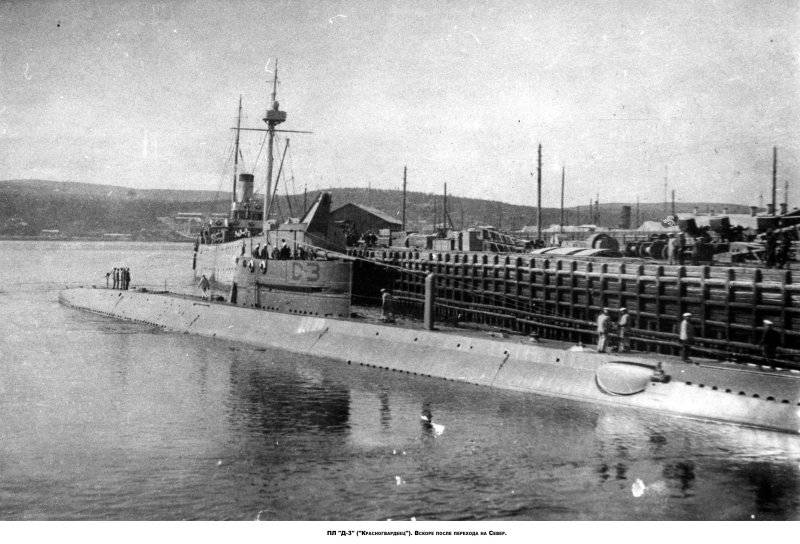
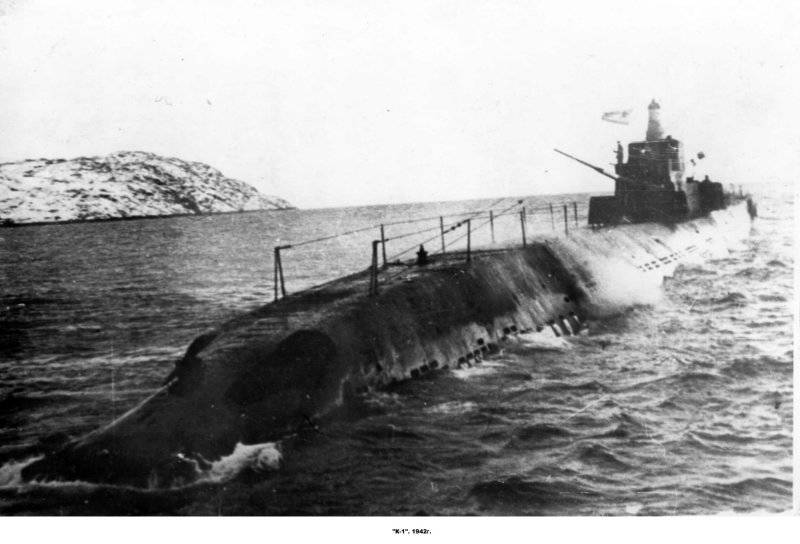
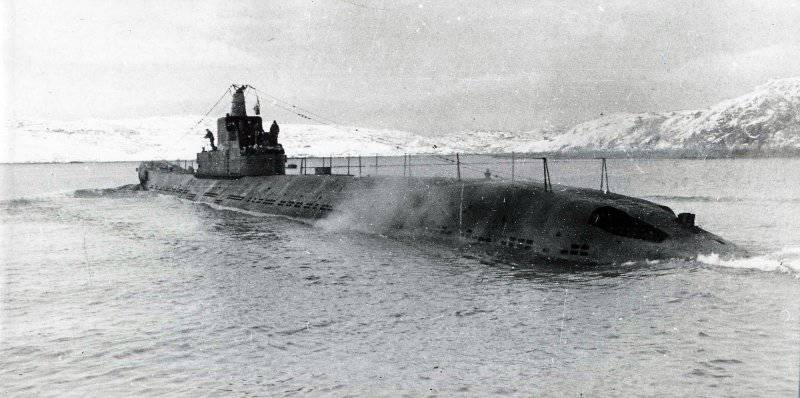
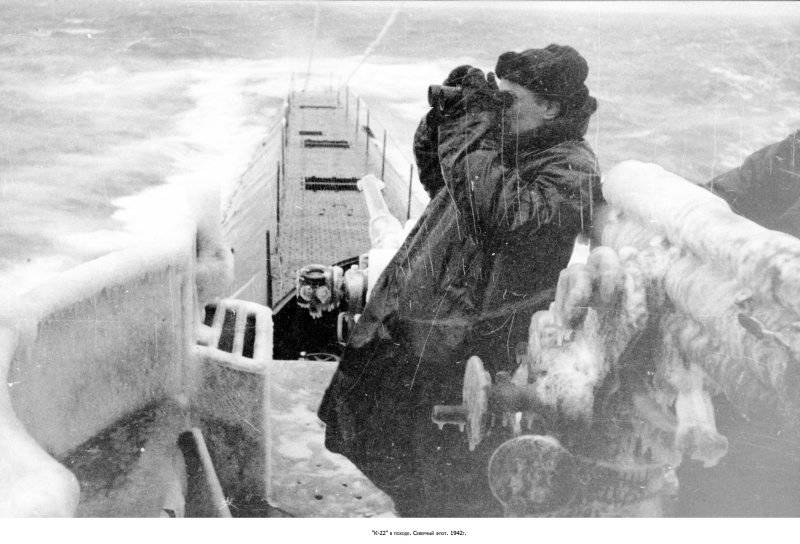
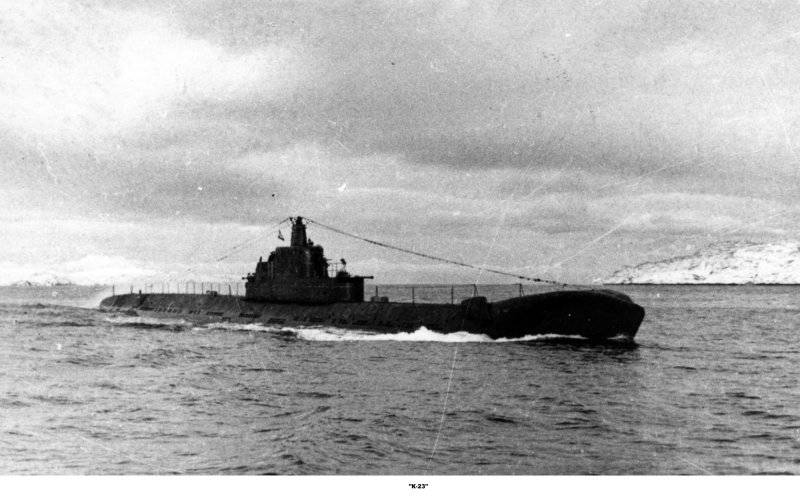
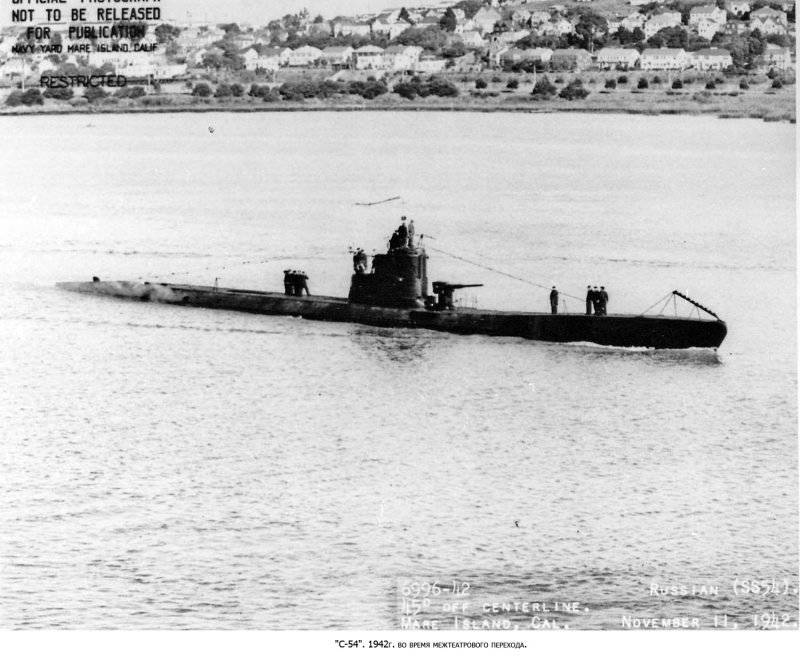
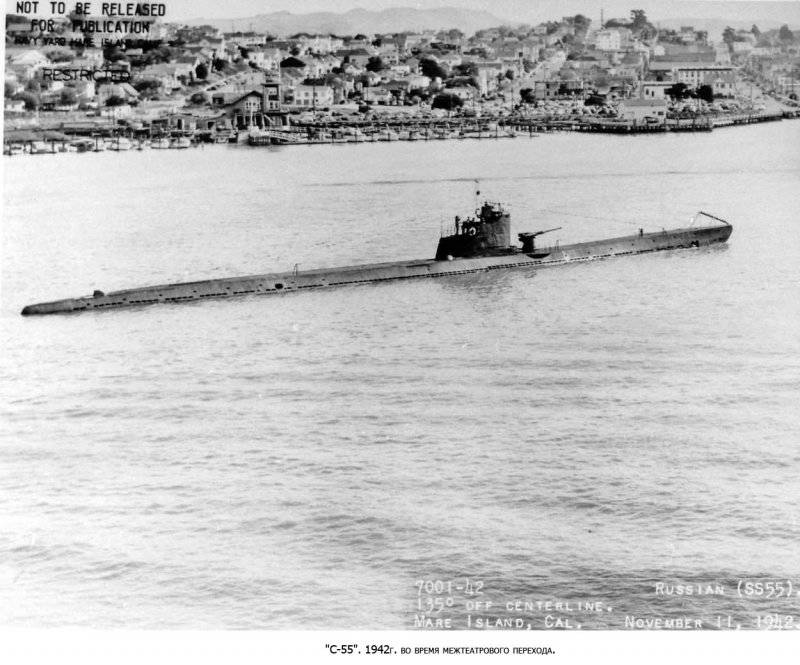
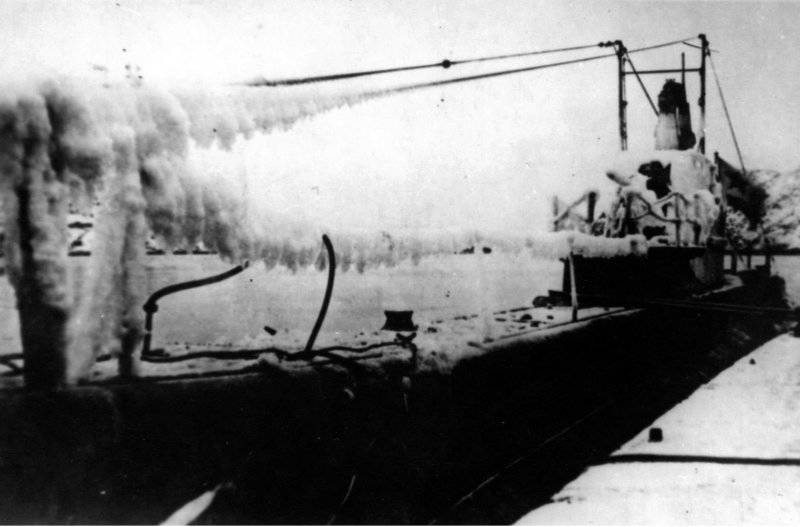
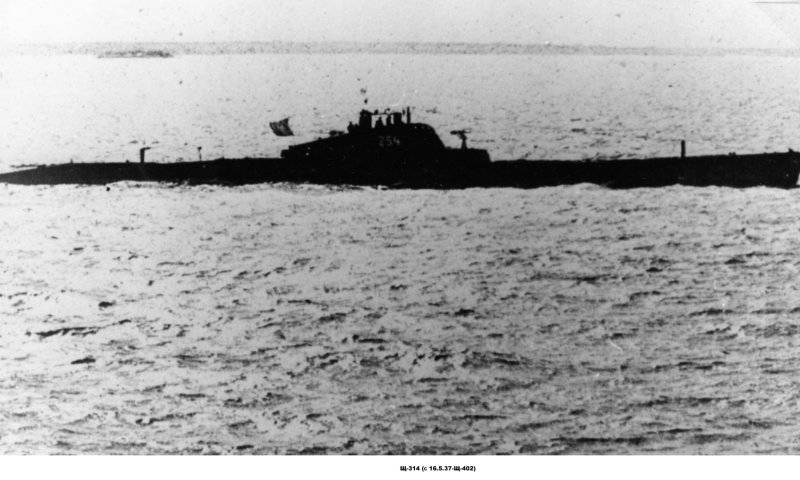
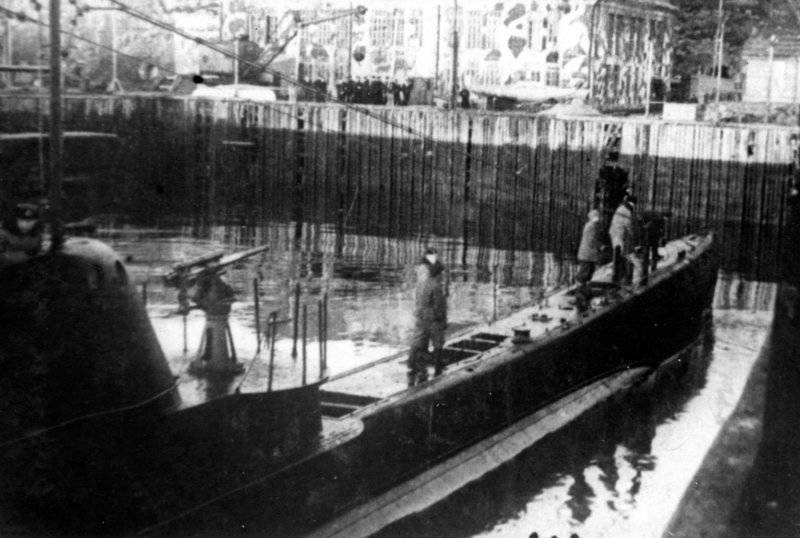
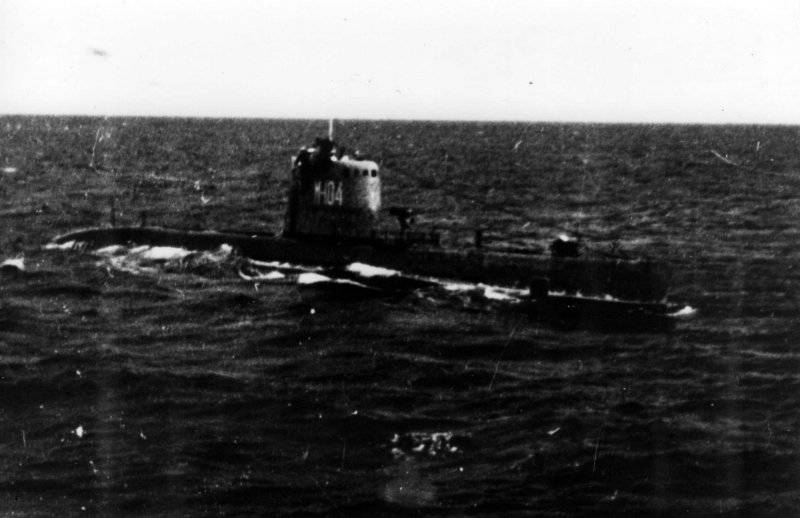
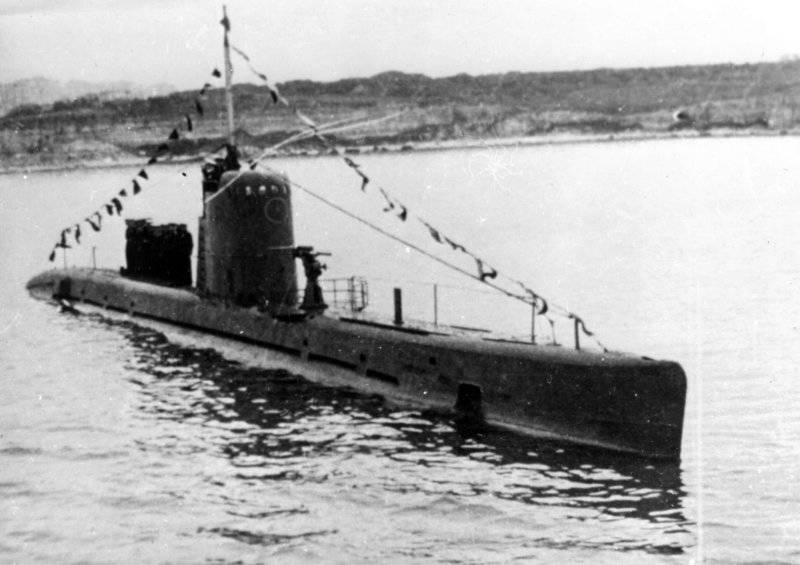
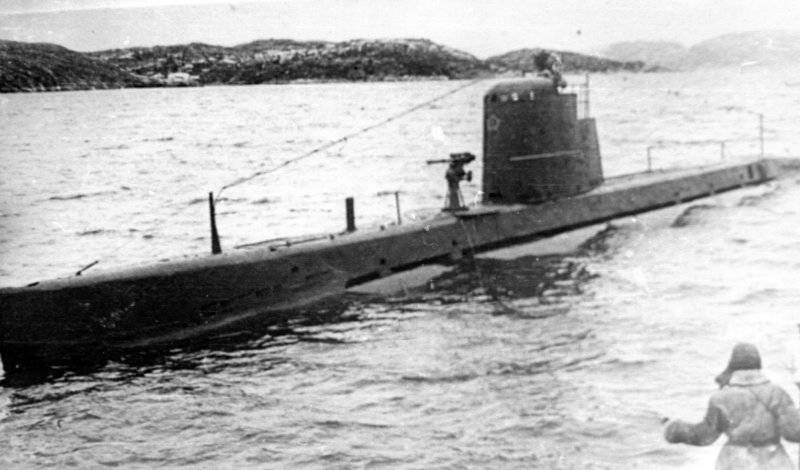
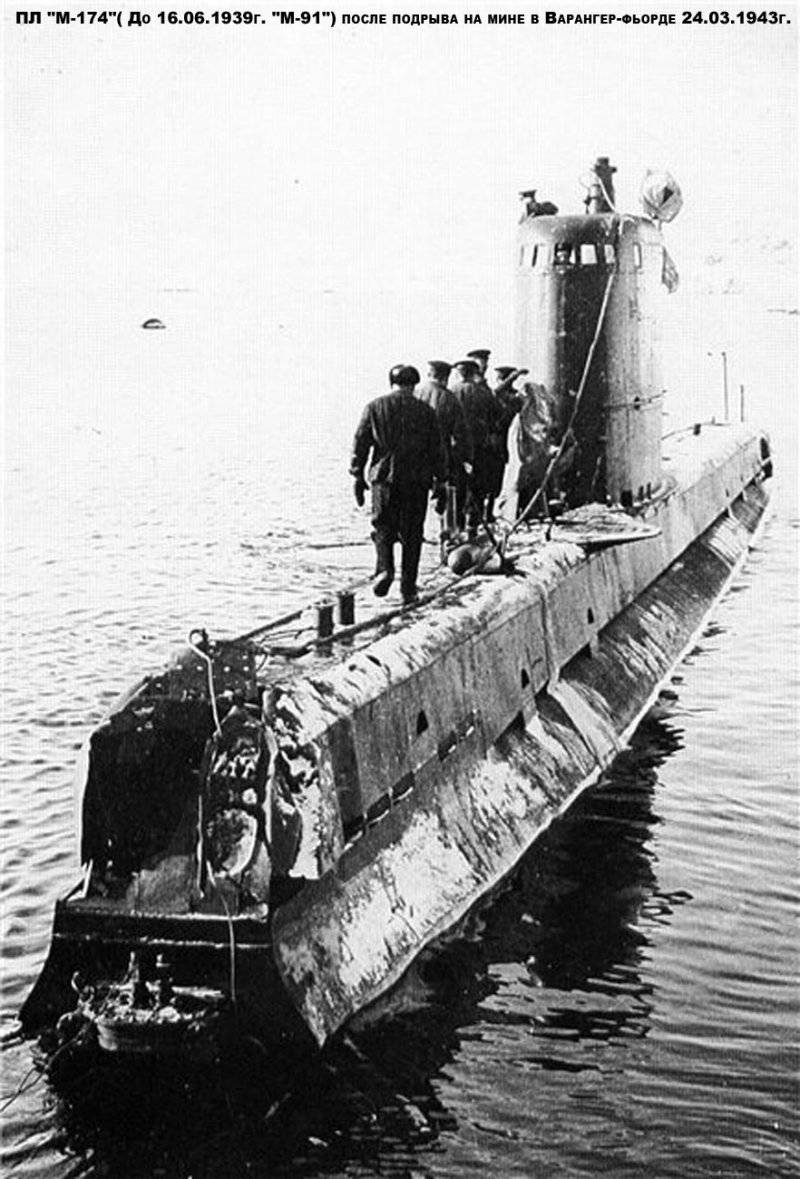
Information